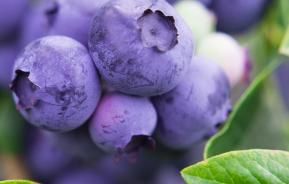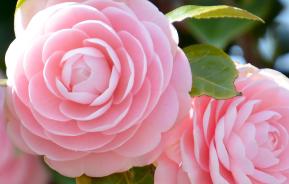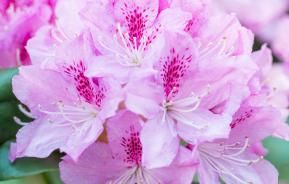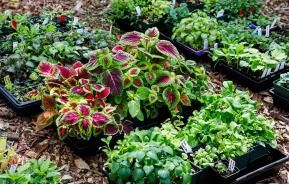Rhododendrons and azaleas produce spectacular spring displays of colourful flowers. Rhododendrons and evergreen azaleas provide interest all year round, while deciduous azaleas produce excellent autumn leaf colours. There are literally thousands of species and varieties and a huge range of flower colours.
Types of rhododendrons
True rhododendrons are evergreen shrubs or trees with gorgeous trumpet-shaped flowers, mostly in spring. There are dwarf types suitable for rock gardens, but most make large bushes.
Azaleas are also species of Rhododendron and there are two types. Evergreen azaleas look to all intent and purposes like small-leaved rhododendrons. They are all generally small shrubs, growing up to around 90cm (3ft). Deciduous azaleas produce large, scented flowers and the foliage of most types turns glorious colours in autumn.

How to grow rhododendrons
Cultivation
Rhododendrons always do best in a sheltered position with dappled shade. They don’t like deep shade, especially deep shade under trees. Many rhododendrons will tolerate a sunnier position, as long as it is protected from cold winds and the soil doesn’t dry out. Also avoid positions that receive early morning sunshine.
Rhododendrons need moist but well-drained soil, that is rich in organic matter, so the roots don’t dry out. The soil also has to be acid (with a pH of 5-6). Because acidifying alkaline soil is never that successful, if your soil isn’t acidic grow them in pots of lime-free ericaceous compost.
Planting rhododendrons
Container-grown rhododendrons can be planted at any time of year, although autumn and early spring are the best times. Before planting, dig in lots of acidic or neutral organic matter, such as composted bark, leafmould or ericaceous compost. Don’t use manure or mushroom compost as they are too alkaline.
Don’t plant too deeply as rhododendrons are surface rooting, and the roots should be just covered with soil.
Add an ericaceous plant food and water in well. Finally, add a 5cm (2in) deep mulch around the root area. Rhododendrons are great for growing in containers on lightly shaded patios.
Suggested planting locations and garden types
Flower borders and beds, patios, containers, city and courtyard gardens, cottage and informal gardens, woodland gardens.
How to care for rhododendrons
As rhododendrons are shallow rooted they can be very prone to drying out during hot, dry summers. If they do dry out while they’re setting their flower buds (from June to August) for the following year, they won’t flower properly. So water regularly during this time.
When watering, preferably use collected rainwater. If you have to use tap water, and it is alkaline (referred to as ‘hard’, which causes your kettle to fur up), you can neutralise the alkalinity by sprinkling sulphur chips over the soil or compost. Do this twice a year – in spring and autumn. Watering and feeding at the same time with a liquid plant food will also help neutralise the alkalinity.
Feed every spring with a granular ericaceous plant food.
Rhododendrons don’t need regular or annual pruning other than removing dead, diseased or damaged growth. But, if necessary, they can be pruned – even hard pruned – immediately after flowering.
They also benefit from deadheading of spent flowers if this is possible and practical. Carefully snap off the old flower between thumb and forefinger without damaging the new growth buds developing below.
| Flowering season(s) | Spring |
|---|---|
| Foliage season(s) | Spring, Summer, Autumn, Winter |
| Sunlight | Partial shade |
| Soil type | Clay, Loamy, Sandy |
| Soil pH | Acid loving/ericaceous |
| Soil moisture | Moist but well-drained |
| Ultimate height | Up to 10m (33ft), depending on species and variety |
| Ultimate spread | Up to 5m (16ft), depending on species and variety |
| Time to ultimate height | 5-10 years |








